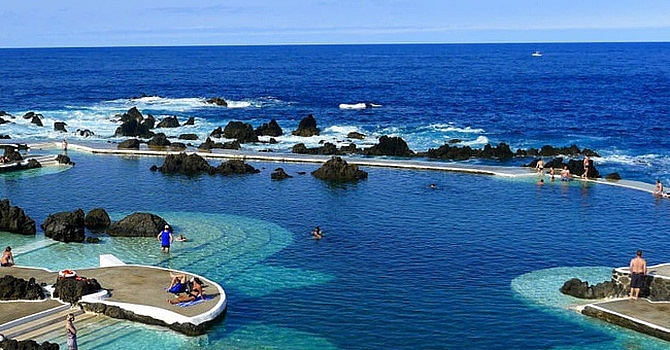Bamboo Capital, Pavillion Corporation eye Vietnam’s largest water-borne project
 |
| The project of artificial islands in Danang Bay will cost $8 billion |
Bamboo Capital, Pavillion Corporation, and Danang Food JSC have expressed interest in developing the project named Lotus Island in the waters of Danang Bay with a total investment capital sum of $8 billion.
The original goal of the Lotus Island project is to build a special economic zone by constructing artificial islands that form functional areas, such as residential areas, casinos, financial centres, duty-free zones, golf courses, and other infrastructure. The project would be located about 1 kilometre from the coast and connected to the mainland by modern bridges.
Pavillion Group, headquartered in Malaysia, is currently implementing many large projects across the globe. Danang Food JSC, formerly known as Quang Nam Danang Food Company, was established in 1992 and is not a realty company. Meanwhile, Bamboo Capital Fund is part of Bamboo Capital—a group of companies operating in various fields in Vietnam.
After the recent meeting with the three investors, leaders of the Danang People’s Committee assigned related departments and the authorities of Hai Chau, Thanh Khe, and Lien Chieu districts to work with the Danang Investment Promotion Agency to provide the necessary information for investors to complete their investment proposals.
VIR contacted Bamboo Capital for detailed information on the project, however, a staff stated that they, including the two remaining investors, have just expressed their interest to develop the project to the city leaders and so do not wish to publish further information just yet.
Lotus Island in Danang Bay will have massive investment capital, thus it will increase foreign capital inflows to the city by a significant amount, however, it also carries a risk of environmental pollution in case of lapses during monitoring and implementation.
This will not be Vietnam's first project built on the sea, although several projects which were not meant to be built in water per se but managed to encroach on significant water area have been giving such project a bad name. Take the Nha Trang Sao project, for instane.
In mid-May, Nha Trang Sao JSC filed another complaint in order to receive permission to continue a tourism project which was banned for illegally encroaching on the renowned Nha Trang Bay in the central province of Khanh Hoa.
The project on Pham Van Dong street was licensed in 2012 with the total investment of $33 million. The construction started in 2014 and was scheduled for completion in late 2016, according to plo.vn.
In early 2016, the project investor was fined for VND130 million ($5,909) for failing to monitor the environmental impacts of construction activities, and VND70 million ($3,181) for illegally filling up 23,000 square metres of the bay.
The project's investment certificate was also revoked. The investor was asked to restore the bay and remove an embankment. However, little has been done and the project has become stagnant. Nha Trang Sao JSC has since filed two complaints to the provincial Department of Planning and Investment.
On May 17, Hong Kim Yen, the legal representative of Nha Trang Sao JSC, claimed that the violations were not the investor's fault as they were decided by the company's old shareholders. After welcoming new shareholders in last March, they adjusted the architectural planning following the Khanh Hoa People's Committee's requests. They also submitted the planning to local authorities but received no feedback.
Yen requested the province to authorise the project to resume, saying that if the project is put into use, it will help boost the local tourism sector and protect the coral reef and the marine environment.
Meanwhile, the Khanh Hoa Department of Planning and Investment said that they had a meeting with Nha Trang Sao JSC on March 30 and the investor failed to provide sound evidence to prove their claims. According to the department, not only did Nha Trang Sao JSC violate the regulations in the first place, it did not fix the wrongdoings even after being fined.
The department refused to issue another investment certificate and said that Nha Trang Sao had the right to file a complaint to the Khanh Hoa People's Committee.
What the stars mean:
★ Poor ★ ★ Promising ★★★ Good ★★★★ Very good ★★★★★ Exceptional
Related Contents
Latest News
More News
- Driving double-digit growth through green and circular transformation in Vietnam (December 17, 2025 | 09:00)
- Vietnam bucking trend in the global M&A landscape (December 16, 2025 | 14:20)
- Vietnam’s green transition demands collective financial action (December 15, 2025 | 12:00)
- VIR workshop highlights capital and policy for sustainable development (December 15, 2025 | 11:00)
- National Assembly approves pilot mechanisms to accelerate major projects in Hanoi (December 12, 2025 | 11:29)
- Vietnam eases policy approval requirements, simplifies foreign and outbound investments (December 11, 2025 | 17:53)
- Unpacking new momentum in Vietnam’s M&A market (December 10, 2025 | 09:59)
- Forum honours outstanding M&A deals, strategies, and advisory firms (December 09, 2025 | 18:22)
- Vietnam enters defining phase of M&A growth (December 09, 2025 | 17:00)
- Vietnam’s M&A market opens new opportunities amid strong economic momentum (December 09, 2025 | 15:00)

 Tag:
Tag:


























 Mobile Version
Mobile Version